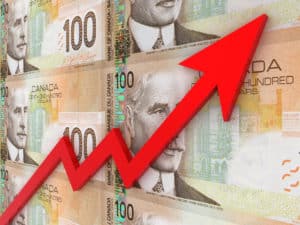In the past week, the S&P 500 has fallen 5.7%, the Dow Jones Industrial Average has fallen 5.2%, while the S&P/TSX Composite Index has fallen 5.2%. In particular, on Friday, in a single day, the first fell 3.2%, the second fell 3.1%, and the last fell 2%.
It surely looks like the sky is falling and more pain is coming. If you maintain a dividend portfolio, how do you review it for your needs?
Income investors have it easier
If you’re an income-oriented investor who maintains a portfolio of dividend stocks, you should be less vexed by the falling stock prices. Why is that? Well, you can focus on something else that is more predictable than stock prices, the dividends.
A falling market is a reminder to review our dividend portfolios to see if it is doing what we expected it to do. Other than ensuring you don’t have too much allocated in any sector or any company, you should also review to see if you have too much income coming from any sector or company.
Ensure you’re not receiving too much income from any high-yielding company
Investors should be aware that many real estate investment trusts (REITs) pay above-average yields. In my portfolio, I have NorthWest Healthcare Properties REIT (TSX:NWH.UN), which yields 10.2%, Dream Global REIT (TSX:DRG.UN), which yields 8.8%, and Northern Property REIT (TSX:NPR.UN), which yields 8.1%. So, I have to ensure they don’t generate, say, over 5% of my total income from investments in case they decide to cut their distributions.
I don’t see the above stocks cutting their distributions, but other high-yielding companies might. Some energy companies, like Baytex Energy Corp. (TSX:BTE)(NYSE:BTE), come to mind.
Tracking dividend growth
When the market falls as a whole, there are likely headwinds that are affecting the whole economy. For the companies that you expect to continue increasing dividends, see if they’re still increasing dividends under these headwinds, and keep track of how much they’re increasing each year.
For instance, during the financial crisis, the Big Six Canadian banks froze their dividends, but a few years later, they continued increasing them again. So, it’s not a one-size-fits-all concept. Depending on the situation, sometimes even companies that have hiked dividends for many years have to freeze or even cut their dividends. Still, in an uncertain environment, if a company continues to increase its dividend, it’s a good sign no matter what.
I’ll use National Bank of Canada (TSX:NA) as an example. Its annual payout has increased from 10-12% since 2011. It last increased its dividend at an annualized rate of 15.2%. With a payout ratio of about 45% and earnings expected to increase by 5-8%, investors can expect its dividend to grow at least 5-8% a year.
As long as quality companies with histories of paying and maybe increasing dividends continue doing that, there’s no reason to worry and sell when the market falls. If you do, you will lose that income stream, which might have been your goal when building a dividend portfolio in the first place.
In conclusion
Actually, even before a market falls, Foolish investors should review their portfolios periodically, at least every three months. However, falling markets are a reminder that investing is not a set-and-forget thing. The market and the factors that affect it change all the time. They’re dynamic. As a result, we need to be dynamic too.
Income investors can focus on the income they’re receiving, so that they can better ignore market gyrations and avoid selling at a loss. Foolish income investors should also manage risk by knowing how much income they’re receiving from each holding and sector, and make adjustments as needed along their investment journey.







